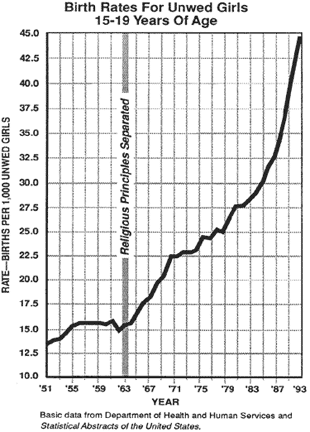
Once again, it seems AdmitSpit readers are wondering about colleges’ standardized testing expectations.
I couldn’t find a comprehensive list anywhere on the Internet that compiles the SAT expectations at each of the top schools, so I created one! The name of each school, along with the math and verbal SAT scores they usually accept and any special notes are provided. This data was taken from each college’s admissions Web site.
Brown: For Verbal, 25.5% admitted with 750-800 score, 16.7% admitted with 700-740, 9.5% admitted with 650-690, 7.9% admitted with 600-640, 7.1% admitted with 550-590, 6.2% admitted 500-540, 2.6% admitted with 450-490, and only 2 students or 1.4% admitted with score less than 450. For Math, 24.6% admitted with 750-800, 16.2% admitted 700-740, 8.3% admitted with 650-690, 8.1% admitted with 600-640, 7.7% admitted 550-590, 4.6% admitted 500-540, 2.7% admitted 450-490, and no one was accepted with less than 450 score in math. 7.2% didn’t submit SAT scores. Data based on the accepted Class of 2010.
CIT: For the Class of 2009, the range of Verbal scores was 460-800, and the range of Math scores was 640-800.
Columbia University: For the Class of 2010, using just the Math and Verbal SAT scores, the middle 50% of accepted students had scores between 1380 and 1530.
Cornell: Based on statistics from the Class of 2010, for Verbal, 66% of enrolling students scored above 650, 34% scored below 650. For Math, 81% scored above 650, and 19% scored below.
Dartmouth: For the Class of 2009, the middle 50% of matriculating students scored 670-770 on SAT Verbal and 680-780 on SAT Math.
Duke: For the Class of 2010, the middle 50% of accepted students had Critical Reading scores of 680-770, Math scores of 690-790, and Writing scores of 670-760. For Engineering students in the Class of 2010, the middle 50% of accepted students scored 690-770 for Critical Reading, 750-800 for Math, and 680-760 for Writing.
Georgetown: For students admitted in 2005, for Verbal, 42% admitted students had scores of 750-800, 26% had 700-749, 18% had 650-699, 17% had 600-649, and 10% had below 600. For Math, 39% had 750-800, 29% had 700-749, 19% had 650-699, 14% had 600-649, and 9% had below 600.
Harvard: Ooh, talk about vague. They just say the “majority of students admitted to the College represent a range of scores from roughly 600 to 800 on each section” of the SAT.
Johns Hopkins University: For students for Fall of 2006, the middle 50% of admitted students had total SAT score of 1990-2280, SAT Verbal scores of 650-750, SAT Math of 690-790, and SAT Writing scores of 650-740.
MIT: For the Class of 2010, the middle 50% of admitted students for Critical Reading was 670-770, for Math was 730-800, and for Writing was 670-760.
Northwestern: Hmm… couldn’t find any information on the Northwestern Web site. If someone finds these stats, send a comment!
NYU: For the Class of 2010, the middle 50% scored between 1310 and 1440 on the SAT. (Unclear if this is for enrolled students or accepted students…)
Princeton: For the Class of 2010, the middle 50% of admitted students had Critical Reading scores between 690-800, Math between 700-790, and Writing between 680-780.
Rice University: For the Class of 2009, the middle 50% of the entering class scored between 1350 and 1510 on the SAT.
Stanford: For the Class of 2010, for Verbal, 65% of admitted students had 700-800, 29% had 600-699, 6% had 500-599, and less than 1% had below a 500. For Math, 72% of admitted students had 700-800, 25% had 600-699, 3% had 500-599, and again less than 1% had below a score of 500.
UC Berkeley: For the Class of 2010, the average Critical Reading plus Writing plus Math score was 2007 for admitted students.
UCLA: For the admitted students in the Class of 2010, the average Critical Reading plus Writing plus Math score was 2003.
University of Chicago: For enrolled students in the Class of 2010, 27% were between 1500-1600 for math and verbal scores combined. 32% were 1400-1490, 26% were 1300-1390, 9% were 1200-1290, 4% were 1100-1190, 1% were 1000-1090, and no students fell below 1000. The middle 50% of students scored 1350-1500 for combined SAT verbal and math results.
University of Pennsylvania: For the Class of 2010, for Critical Reading, 27% of admitted students had 750-800, 22% had 700-740, 18% had 650-690, 15% had 600-640, 9% had 550-590, 7% had 500-540, 1% had scores less than 500. So, the middle 50% had scores of 640-750. For Math, 22% admitted had 750-800, 19% had 700-740, 16% had 650-690, 15% had 600-640, 9% had 550-590, 5% had 500-540, and less than 1% had a score under 500. So, the middle 50% had scores of 680-780. For Writing, 28% had 750-800, 22% had 700-740, 17% had 650-690, 13% had 600-640, 10% had 550-590, 5% had 500-540, and 1% had under 500. So, the middle 50% had scores of 650-750. 21% of admitted students submitted only the “old” SAT. 15% submitted the ACT only. Go Penn for putting up comprehensive statistics!
Yale: Somewhat vague. The middle 50% of the entering class had scores between 700 and 790 on both the Verbal and Math sections of the SAT.

